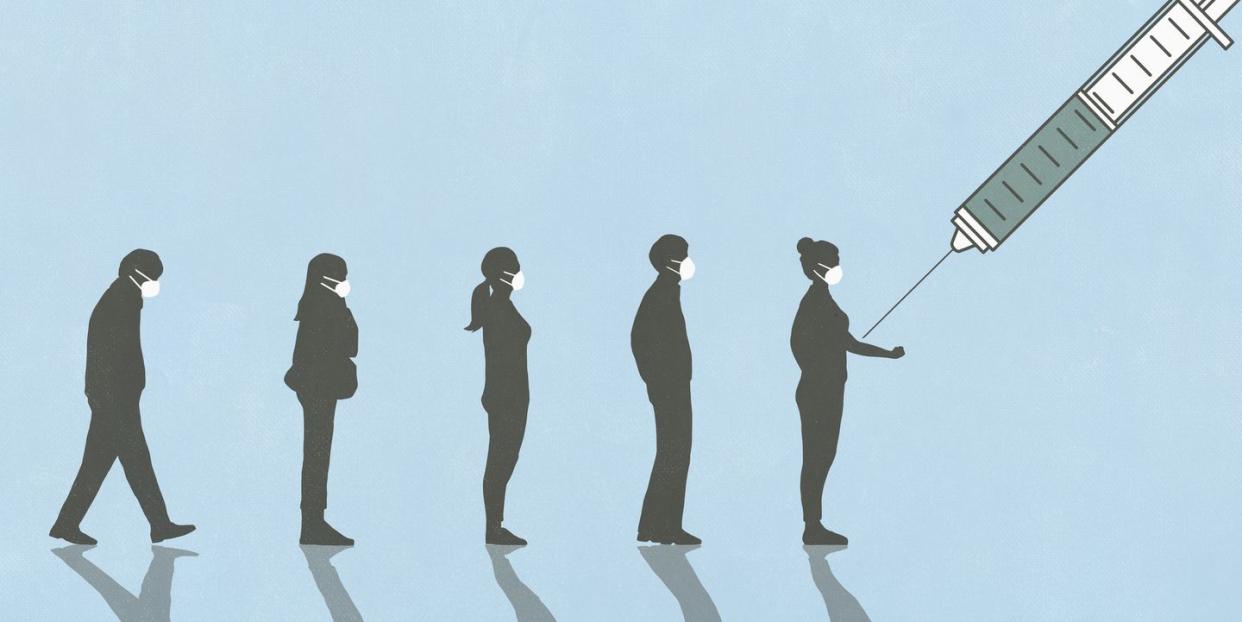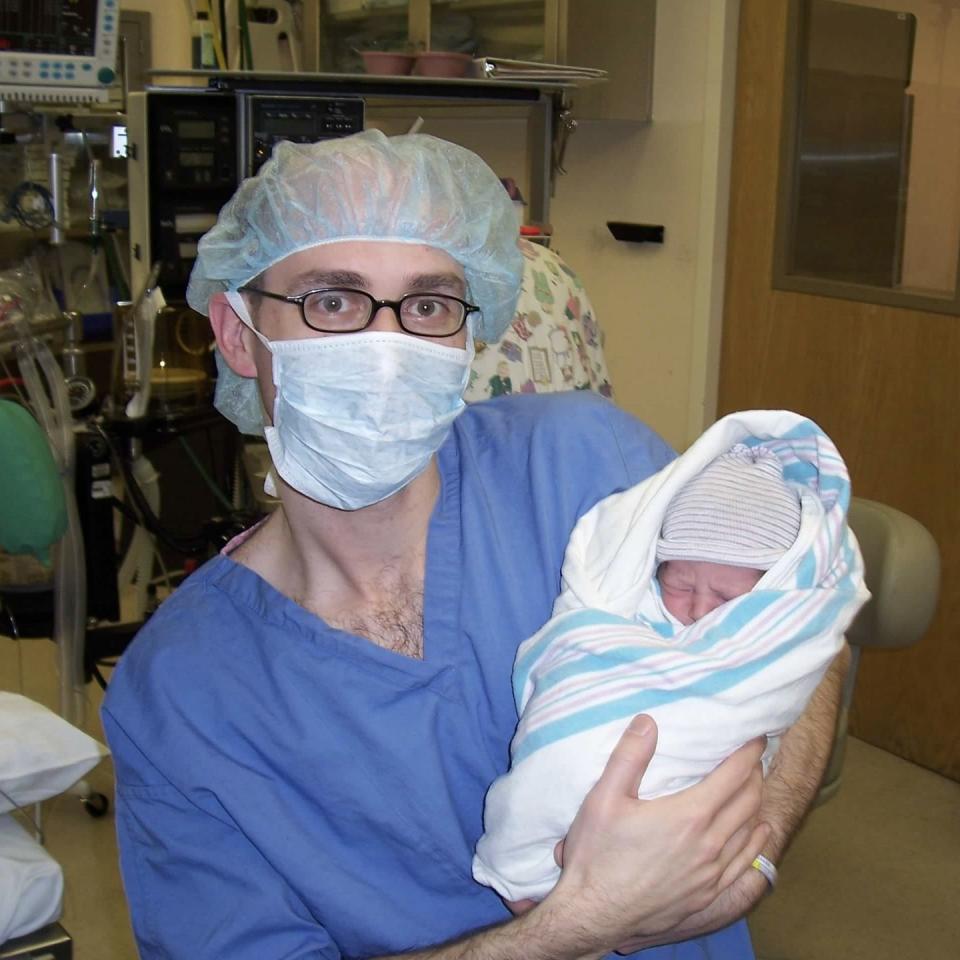My 15-Year-Old Daughter's Friends Are All Getting Vaccinated While She Waits on the Sidelines

My daughter, like everyone else in her class of high school sophomores, will turn 16 this year. Unlike almost everyone else, however, she won’t cross that magical age threshold until late November, long after most of those birthdays of her classmates have passed.
In the fall of 2010, when my wife and I decided to enroll her in kindergarten when she was still three months away from turning 5, we knew that we were consigning her to a childhood and adolescence of lasts — the last in her class to celebrate her birthday every year, the last to have a bat mitzvah, the last to get her driver’s license — as opposed to the life of firsts that holding her back a year would have afforded her. But we made our choice knowing that none of the above milestones would be all that consequential in her development.
Then, of course, came the pandemic, and with it one more last to add to her ever-growing list: The last in her class to be vaccinated against COVID-19.
Video: Five myths about the flu shot
Or at least that’s what we thought until … today. As of April 19, when everyone in America 16 and older became eligible to receive a vaccine, 15-year-olds like my daughter were still waiting on the sidelines. Then came this week’s news that the Food & Drug Administration is on the cusp of authorizing the Pfizer-BioNTech vaccine for use in 12- to 15-year-olds, perhaps as early as next week. This is great news, but there are still additional steps required after this authorization — approval by the Centers for Disease Control & Prevention, and then the logistical hurdles of the rollout, which will of course be handled by individual states and counties as it has been up until now.
All of which raises questions of when exactly the COVID-19 vaccine will get into these young arms: Will vaccine appointments be available right away for these teens? Or will the shots be held back until a higher vaccination rate is achieved in more vulnerable communities? Depending on where you live, could this mean that your shot might come in June, or maybe early July? With a second dose later in July, or early August? And then two more weeks to wait for full immunity?
It’s this uncertainty, mixed with the waiting to catch up, that is becoming too much to bear for a social teenage girl who has already spent about 10 percent of the life she remembers trapped in our house, a girl who hasn’t set foot in her school building in almost 14 months.
Yes, I hear what the parents of younger children would say to this: We’d be thrilled with June or July! Our kids may not be vaccinated until 2022! And I totally understand that sentiment, but I also know first-hand that parents of high-school sophomores are dealing with a crucial phase of adolescence when it’s important for teenagers to separate from their parents and spend more time with their peers.
I also know — as does my daughter, good head that she has on her shoulders — that griping about simply waiting one’s turn can ring quite hollow in a year when so many people have suffered through unimaginable loss, when we are living through an era of racial injustice and widespread inequality.
And yet: This is my daughter’s life right now. She’s been a good sport for most of the past year, amazingly so, and the additional family time we’ve spent together is something we’ll cherish forever. But we have to keep reminding ourselves: This is not normal. She’s not supposed to be spending long nights in her room playing Jackbox games with her friends remotely. So now, as her classmates who have already turned 16 this year begin to get vaccinated and resume a modified version of their social lives, her fear is that the Jackbox crew will start to break apart while she and a few of her other later-born friends wait a few weeks longer.
At the age of 15, with the high season of spring and summer socializing upon us, these few extra weeks are crucial, and the FOMO will be real. The split between ages is different for my daughter’s unique cohort than it would be for, say, a ninth-grade friend group of mixed 14- and just-turned-15-year-olds, who will all become vaccine-eligible at the same time once the switch is flipped.
Emily Edlynn, Ph.D., a Chicago-area psychologist who works with children and adolescents, agrees that these teenagers are in a bind. "Right now the wait feels eternal, especially for the teenage brain,” she says. “There can be a tendency in times of high emotion to use black-and-white thinking, like ‘My friends are vaccinated, so I’m going to miss out.’”
“What’s hard is that there isn’t one way the pandemic has affected teens,” Dr. Edlynn continues. “Life is never all bad or all good — most teens are sliding on that continuum all the time. If some already struggled with anxiety or social issues, quarantine more likely exacerbated those. But others came into it with more internal resources, and they have found their points of resilience and growth.”
Perhaps my daughter puts it best herself: “In normal times, I knew every day wasn’t going to be perfect. If I had a bad day, I could at least look forward to seeing my friends over the weekend. Life has its ups and downs. But in quarantine, there are only downs.”
My wife and I have always been what you might charitably call overprotective parents. During the past year, the code words for this approach have been “We’re being careful…” or “We’re being very cautious.” For a teenager, that translates into her parents saying no to just about everything. We know that many other parents identify with us, while just as many are likely to poke fun at us behind our backs.

There is light at the end of our dark tunnel, however. With my daughter’s vaccination pending, “there really is an end point in sight,” Dr. Edlynn says. “In the meantime it feels eternal, especially for the teenage brain. There can be a tendency in times of high emotion to use black-and-white thinking, like ‘My friends are vaccinated, so I’m going to miss out.’”
It doesn’t have to be this way, Dr. Edlynn continues: “There are other options that are gray areas. You can take a proactive approach to plan outings for her while following certain safety rules.” We all know those rules by heart: Meet outdoors. Maintain social distance. Wear a mask.
Now that the rest of our family is fully vaccinated, including her older brother, we are loosening the reins on my daughter a bit; we’re even planning for her imminent return to hybrid in-person schooling twice a week, which will go a long way toward improving her mental state. Her own vaccination will come, and our family will happily bide our time until then; we’re now more hopeful than ever for some semblance of a summer vacation in August and for the start of a somewhat-normal junior year for her in September.
But today, the waiting continues. In time, all of the 15-year-olds, and the 12- and 13- and 14-year-olds too, will have the opportunity to be vaccinated, and life will go on. And then you might want to ask the parents of the 11-year-olds in your neighborhood how they’re feeling about having to wait their turn.
You Might Also Like

